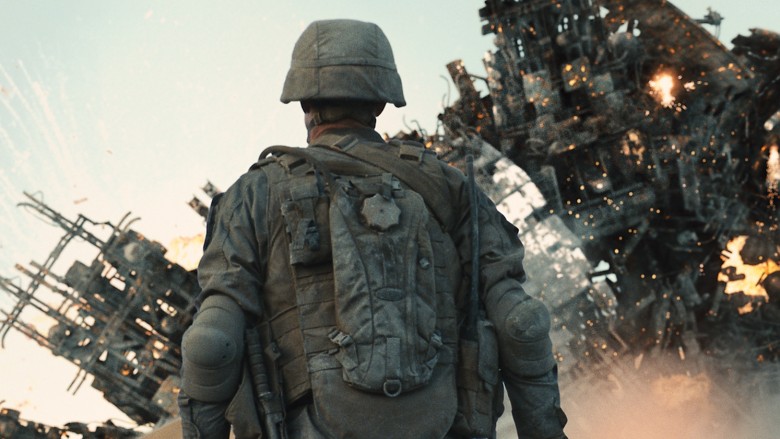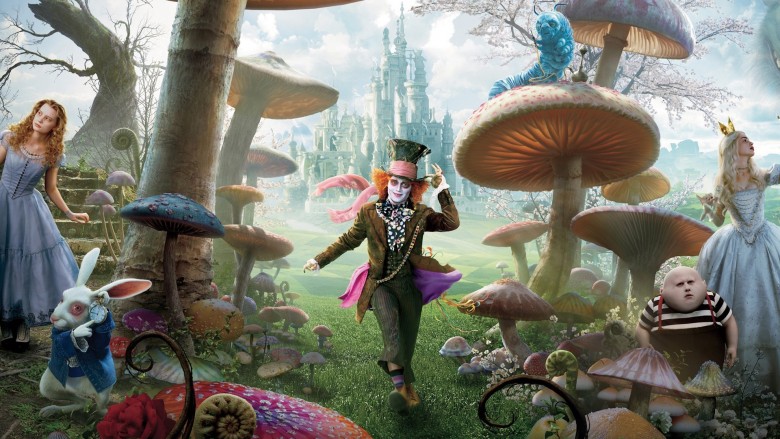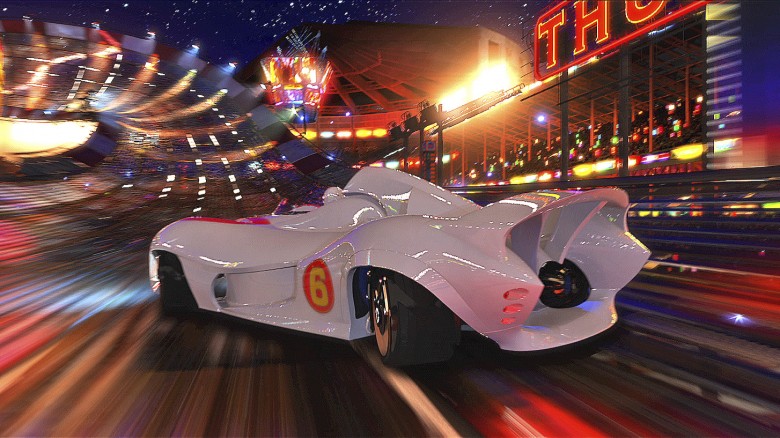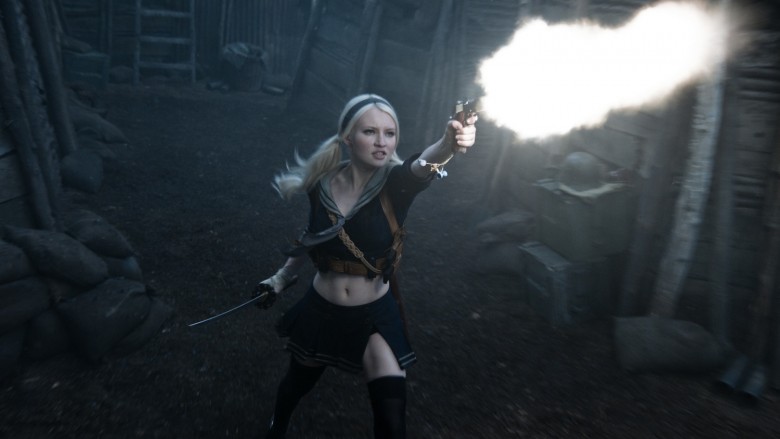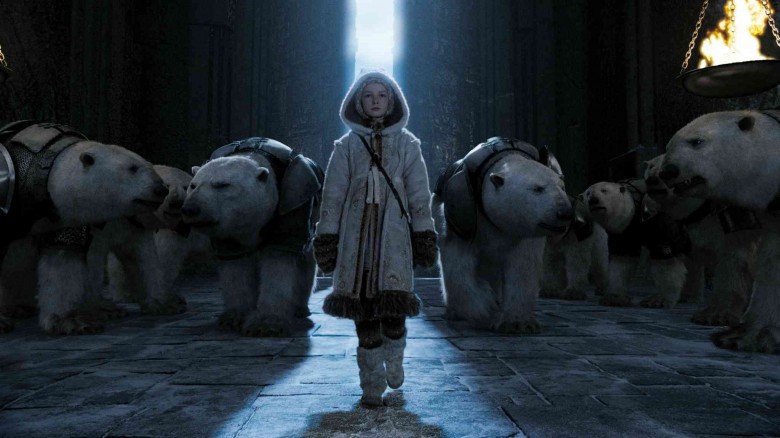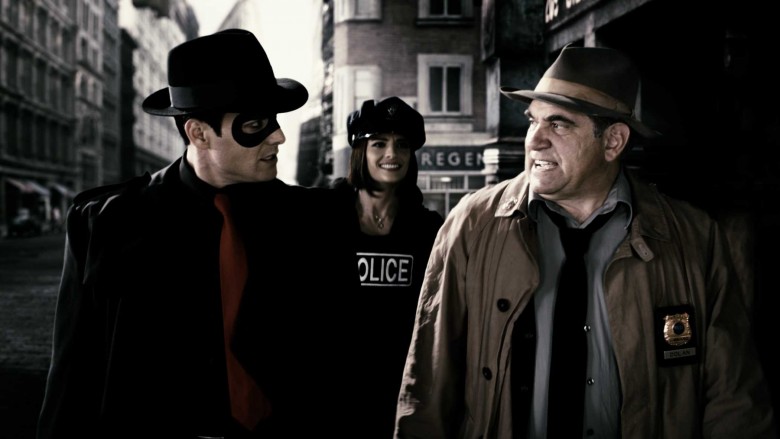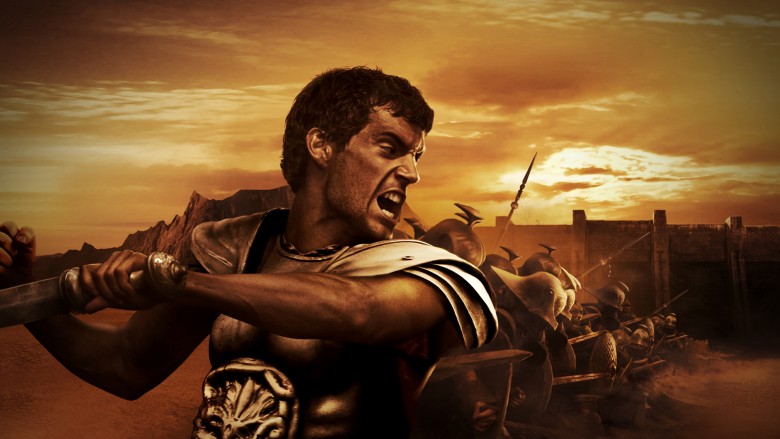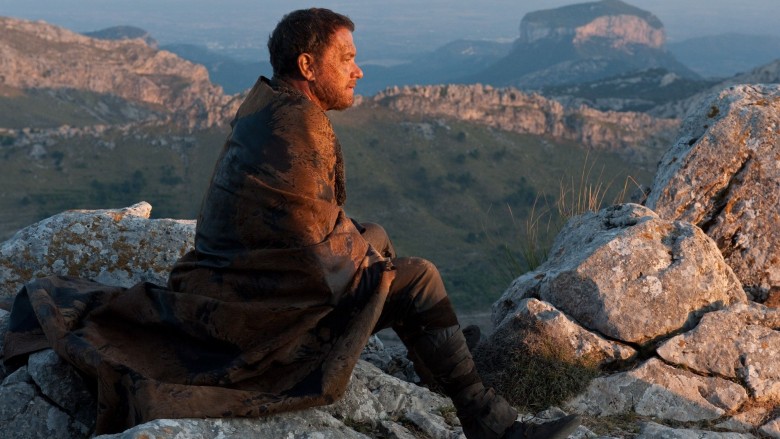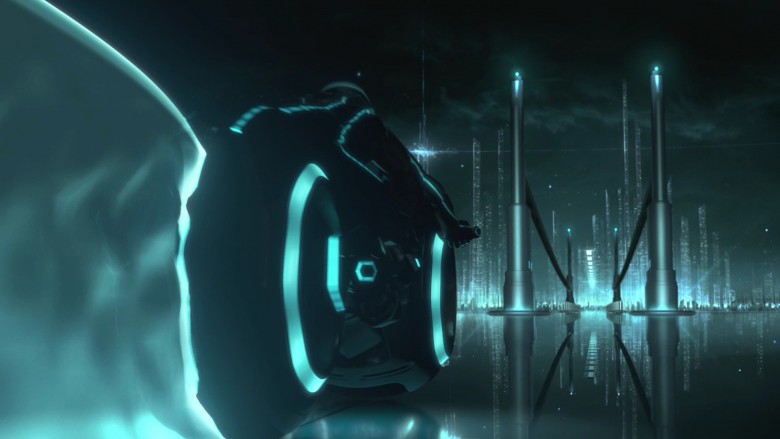Movies That Are Only Worth Watching In Theaters
In a perfect world, every movie would be great—but that's sadly not the case. Some movies are just bad, and they're not worth wasting your time on watching at home. But in spite of the thinly sketched characters, ludicrous plot twists, and laughable dialogue, some bad movies can actually be quite a lot of fun...as long as you're watching them on the largest possible screen in a dark room full of strangers. We don't recommend watching any of these from the comfort of your couch—but there's a good chance that if you saw them at the theater, you had a pretty good time.
Battle: Los Angeles
People have always been fascinated with (and potentially scared of) whatever life exists beyond Earth. That's why aliens and the science fiction genre go hand-in-hand. The idea of an extra-terrestrial force invading Earth isn't anything new, and we've seen it happen countless times on the big screen—including Jonathan Liebesman's Battle: Los Angeles, which, interestingly, is loosely inspired by the actual Battle of Los Angeles. Overnight on February 24, 1942, the U.S. military unleashed a barrage of anti-aircraft artillery against what they presumed was the Japanese attacking Los Angeles, but was later thought to be aliens.
A large-scale alien invasion that takes inspiration from a real-life event—how could Battle: Los Angeles not be a hit with audiences? Unfortunately, it fell into the same trap that many war movies suffer: it was more of a military recruitment video than a sci-fi blockbuster. That's not to say the movie isn't worth seeing, because it is—but only on the big screen. The shot of the invasion alone, along with possibly the final battle with the alien forces, is worth the ticket.
Imagine a movie like Black Hawk Down with aliens. According to the movie's lead, Aaron Eckhart, that was the purpose all along. The movie was meant to tell a story of what a real-life alien invasion would look like. "The goal was: this is a war movie, a documentary style war movie—with aliens in it." In that regard, Battle: Los Angeles succeeded, and it was quite the spectacle. But that's all it was.
Alice in Wonderland
With well over a dozen live-action remakes in development, Disney is knee-deep in adapting some of their most famous animated movies and characters. If you're wondering why this trend even became a thing, look no further than Tim Burton's Alice in Wonderland: the first majorly successful live-action reboot by Disney, it offered a re-imagining of one of their most beloved animated movies (which itself was based on the 19th-century novel by Lewis Carroll). The fact that it grossed over a billion dollars worldwide—which at the time had only been done by seven other movies—made it an enormous success.
Just because it was financially successful, though, doesn't mean it was actually good. The consensus on Rotten Tomatoes reads: "Tim Burton's Alice sacrifices the book's minimal narrative coherence—and much of its heart—but it's an undeniable visual treat." Anyone who's read Carroll's original novel, or seen the original Disney animated film, knows how psychedelic the story can be. In that regard, Burton successfully brought the world of Wonderland to life. If any of his movies begs to be seen on the big screen in IMAX, it's Alice in Wonderland.
Speed Racer
After the Wachowskis concluded The Matrix trilogy, they set their sights on the Japanese anime Speed Racer. Regrettably, the movie wasn't as successful as they'd hoped. Interjecting political themes and societal issues into a kids' property may not have been what people had in mind, but the special effects were a feast for the eyes—even if they led to the directing duo being criticized for "[overloading] Speed Racer with headache-inducing special effects." The thing is, though, that's exactly what the movie needed to begin with.
But don't take our word for it; listen to what Stephen Colbert had to say about the film when he saw it in theaters, and the tell us if Speed Racer doesn't sound exactly like a movie that needs to be watched on the biggest screen possible. "If you want a feel of what this movie is like, here's all you do: put 80 pounds of fireworks into an industrial dryer, crawl right in there with them, turn it on, and then light the fuse. It'll give you a good idea of the visual onslaught you'll be enduring. ...It's the classic story of boy meets seizure-inducing lights." In all seriousness, that's an apt description of what the movie is like on the big screen, especially in IMAX.
Sucker Punch
Zack Snyder is a divisive director. His work on Watchmen (particularly the director's cut) and 300 has earned praise, but his other movies have fallen short. Both Man of Steel and Batman v Superman: Dawn of Justice polarized critics and fans alike, and Sucker Punch is no different. The movie was an original concept by Snyder and featured his unmistakable visual style, but despite an intriguing idea, the movie flopped at the box office, grossing a mere $89.7 million on an $82 million production budget.
The best way to describe the film, without giving away specific plot elements, is that it involves women in the '60s from an insane asylum who go on a fantasy adventure trying to escape from a brothel—as warriors. Sucker Punch combines Asiatic elements, particularly iconography involving samurais, anime, and video games, along with cyberpunk themes. It's visually thrilling, and critics agreed, though that seems to be the extent of its pros. Everything else is lackluster, to say the least. Still, those who saw Sucker Punch in theaters were treated to an eye-catching spectacle arguably worth the price of admission all by itself.
The Golden Compass
Shortly before the conclusion of Peter Jackson's The Lord of the Rings trilogy, New Line Cinema started looking at other epics to adapt so they could continue reaping the rewards from a growing trend of high-concept fantasy films. That led them to Philip Pullman's Her Dark Materials trilogy, and its first novel, The Golden Compass. The studio got Chris Weitz to write and direct the production, and he assembled an excellent cast: Daniel Craig, Nicole Kidman, Eva Green, Ian McChane, Sam Elliot, and Dakota Blue Richards.
Despite all the excitement behind the project, The Golden Compass flopped at the domestic box office and relied entirely on overseas markets to recover its estimated $180 million production budget. If the filmmakers didn't cut out significant portions of the film, or alter the secular themes from the source material, then perhaps audiences would have been given a proper adaptation of Pullman's novel, which could have in turn allowed the studio to continue adapting the rest of the series.
Unfortunately, that's not what happened, and all we got was a story lacking the novel's sense of wonder. Instead, The Golden Compass had to rely solely on its impressive visuals to maintain audiences' interest. But that's the beauty of the movie: its visuals, its scope, and its design were its most promising elements. It's worth seeing all of that in theaters, if you ever have the chance. But if you feel the need to leave before the end, don't worry, there really isn't much of one anyway.
The Spirit
Legendary comic book writer and artist Frank Miller has created some of the most influential stories in comic history, such as The Dark Knight Returns and his work on Daredevil. His movies, on the other hand, haven't quite lived up to his reputation. After acting as writer and occasional producer on a number of films, Miller stepped up to the director's chair alongside Robert Rodriguez for Sin City, which was based on Miller's comics of the same name. While that movie was critically and commercially successful, Miller's follow-up project, The Spirit, was...not.
Based on Will Eisner's classic comics, The Spirit stars Gabriel Macht as the eponymous hero. Unlike his work on Sin City, The Spirit marked the first time Miller directed a feature by himself, and in hindsight, that probably wasn't the best idea. The movie not only tanked at the box office, but it caught flak from critics for having a plot that's "almost incomprehensible," dialogue that is "ludicrously mannered," and characters that are "unmemorable."
It might be one of the worst superhero movies ever released, but that doesn't mean it wasn't fun to watch in theaters. After all, comic book movies are supposed to be fun, right? Not everything needs to be dramatic and focus on superhero deconstructionism. The Spirit's unique visuals closely resemble the way the comics actually looked. If you liked Sin City, and are okay with a humdrum plot, then The Spirit could be well worth a watch—on the big screen, of course.
Armageddon
Michael Bay's movies may not always be hits with critics, but they're usually successful enough to warrant sequels. Why else would Paramount not only continue to spew out Transformers sequels every few years, but also expand the series into a full-fledged cinematic universe? Whether you like his movies or not, there's one thing that can't be denied: he sure knows how to blow stuff up. Some people have to come to call his directing style "Bayhem."
Bay's career started in the mid-'90s with Bad Boys and The Rock, but he didn't perfect his technique until his world-ending drama Armageddon in 1998. Starring Bruce Willis, Ben Affleck, and Liv Tyler, among many others, it became the highest-grossing movie of the year, and for good reason: Bay worked with visual effects artists Richard R. Hoover, Patrick McLung, and John Frazier to create a mind-blowing end-of-the-world extravaganza, filled with love, drama, and sacrifice—all set to a decent soundtrack that included a No. 1 hit single from Aerosmith. Armageddon is certainly not the greatest apocalyptic movie, and it may not even be Bay's best work, but it was a fun-filled ride in theaters.
Immortals
Immortals arrived during a surge of Greek mythology films in the 2000s and 2010s, and it had all the bells and whistles: overblown effects, whimsical spectacles, and a war between mortals and immortals (or gods).
Direced by Tarsem Singh, Immortals starred Luke Evans, Kellan Luz, and Isabel Lucas as gods, and Henry Cavill as the unwitting hero chosen to defend them against a threatening force seeking to unleash the banished Titans on Mount Olympus. Instead of depicting the gods as old and wise, Immortals took a different approach, with the gods being much younger and far more reckless. On paper, the movie sounds exactly like a blockbuster hit, and while it did make good money at the worldwide box office, it was anything but a success with critics, who admitted "the melding of real sets, CG work, and Tarsem's signature style produces fireworks," but thought everything else, including the epic story, was dull. At least Cavill, who'd shortly become the DCEU's Superman, has moved on to bigger and better things.
Cloud Atlas
Speed Racer may not have been the hit they wanted it to be, but that didn't stop the Wachowski siblings from pursuing high-concept movies like Cloud Atlas and Jupiter Ascending. The siblings worked as screenwriters on a handful of projects in the time between Speed Racer and Cloud Atlas, but it was the latter that got them back into the director's chair(s), alongside German filmmaker Tom Tykwer.
Based on the novel of the same name by David Mitchell, the film was to be "an epic story of humankind in which the actions and consequences of our lives impact one another throughout the past, present and future as one soul is shaped from a murderer into a savior and a single act of kindness ripples out for centuries to inspire a revolution." In that regard, they succeeded—according to some people. Not unlike other Wachowski films, Cloud Atlas saw polarizing opinions from critics across the board.
Notwithstanding mixed reviews, there's one thing that Cloud Atlas got right: special effects. Seeing the world the Wachowskis created—spanning from the mid-19th century to the 24th century—unfold on an IMAX screen is certainly a treat. By now, it should be painfully obvious that, whatever their flaws, the Wachowskis surely know how to create electrifying visuals. It's their specialty, and it's something they've come to master since their time with The Matrix trilogy.
TRON: Legacy
Decades after the original TRON, Disney commissioned a sequel with Joseph Kosinski at the helm, featuring Garrett Hedlund and Olivia Wilde joining returning stars Jeff Bridges and Bruce Boxleitner. Though the film was a moderate box office success, it appears $400 million wasn't enough to convince Disney to definitively pursue a sequel. Plus, critics weren't too impressed with the story or the characters. What did wow everyone, however, was the visual effects.
The primary issue with using CGI is that, after a few years, the effects tend to look dated. That's why a movie like Jurassic Park still looks terrific more than two decades later—the filmmakers prioritized practical effects over digital ones, only using computer-generated imagery to enhance what they'd already created by hand. But, somehow, TRON: Legacy defies all odds—it looks as good today as it did in 2010. Every scene that takes place on the Grid, particularly the entire Light Cycle match, is a feast for the eyes. Coupled with an astounding original soundtrack by Daft Punk, as well as the occasional 3D effects, the film's a real IMAX experience.

